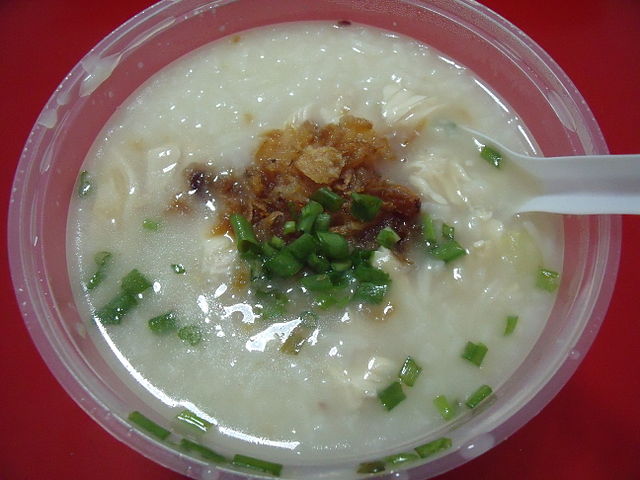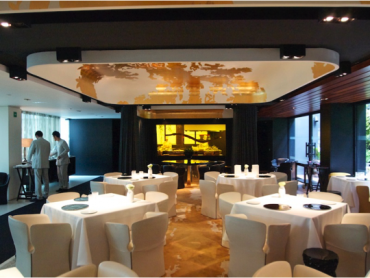Congee: Breakfast of Champions
It’s a given that there can be vast cultural differences between East and West, North and South, or between any other national divide. These range from the grand-scale like architectural patterns to the miniscule nuances of daily interactions. When people travel to a foreign location, they are indeed yearning for that localized, authentic experience, but it’s nonetheless comforting to have some semblance of normality while regrouping at the home base – and that home base should be your hotel!
With this in mind, hoteliers now have to look well beyond their own backyards for customers, and there’s no better place to start than the world’s most populous country – China. According to the Pacific Asia Travel Association, China’s outbound travel increased by 54% between 2005 and 2009 from 31 million to 47 million trips. As per the US Department of Commerce, in 2010, the United States received $5 billion from Chinese visitors alone. No doubt this is an outcome of China’s economic proliferation during the past two decades, and if current forecasts hold, there’ll be more Chinese travelers coming to a tourist destination near you.
Knowing that this is a burgeoning demographic, how can a property best present itself to attract new business? A total overhaul is out of scope both from the perspective of time and money, but there are many subtle changes you can make that will amount to a world of difference. And it all starts with a good breakfast.
Congee is a traditional rice porridge dish that is popular not only in China, but throughout Asia from East India to Japan, with a host of styles, varieties and infusions. I emphasize Congee because it’s relatively simple (which restaurant doesn’t use rice in some form or another?) and because it fits the ‘home base’ mentality. Before a traveler embarks on the day’s adventure, he or she needs to reboot in a stable, calm environment. For me, this is a cup of coffee, some granola and a silent read-through of the daily newspaper. For others, it might be a bowl of congee with tea. Regardless of the cultural specifics, breakfast sets the tone for the rest of the day and ultimately, it will play a significant role in determining how guests perceive your hotel.
Alas, this isn’t necessarily a novel concept. Marriott, Starwood and Hilton have all announced plans to revamp their dining menus to better appeal to Chinese travelers. Starwood has taken this a step further by planning to offer specific services for Chinese travelers such as in-room tea kettles, slippers, translation services, and at least one team member who speaks a Chinese dialect at many of its properties. Hilton is training Mandarin-speaking concierges and installing Chinese television stations at select locales.
All three hotel brands are leveraging their scale and preexisting penetration of the Chinese market, but this doesn’t mean that these are actions exclusive to big chains. Bringing in Mandarin-speaking front desk staff may be far-fetched for an independent hotel, but can you say the same for adding a few new rice-based dishes to the breakfast buffet? How about hiring a translation service to add Mandarin to your dining menus and feature cards? Does your website have a default version for Chinese visitors?
A big component here boils down to how you train your staff to adjust to foreign value systems. For instance, in China, persistence equals interest. So, as the host, you might be expected to offer something multiple times, even though a guest may initially decline. Unlike in the West where good eye contact demonstrates strength of character, a customer from China may view it as a gesture of attitude or defiance. It is not in their custom to tip a full 15% to 20%, so ensure that your restaurant staff members are not offended if this occurs. As well, if you’re planning to surprise a guest with flowers in their room, avoid white as plants of this color denote mourning and funerals.
Someone could write an entire book on these types of differences (and indeed someone already has!) but there are also a few key similarities, those being respect and formality. Never forget to treat all your guests as you would expect yourself, and don’t let this air of geniality break down due to language barriers.
Imagine yourself as a Chinese tourist visiting an American city where the only real spoken languages are English and Spanish. Outside of the foremost tourist attractions, how do you get around and communicate with other people? What happens if you get lost? It’s a scary thought. Now imagine waking up in the morning and seeing Congee on the menu. This displays that the property empathizes with your plight and respects your culture. It’s not much, but just enough to make the hotel memorable.
As always, the point of all this is to leave a good impression. Word of mouth is still one of the most powerful ways to market yourself, and if you succeed with one guest from China, then expect more to follow. And to do this, all it could take is a few behavioral changes, a touch of empathy for their conventions and a hearty Congee breakfast.
(Article by Larry Mogelonsky, published on eHotelier.com on January 18, 2012)




